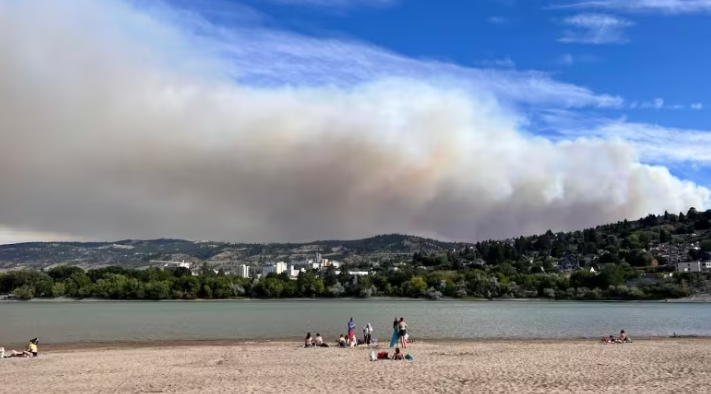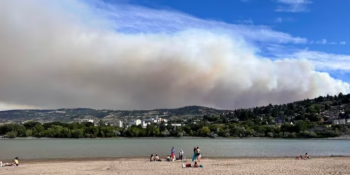Hundreds allowed to return home near Kamloops, B.C., as evacuation order eases

Several evacuation alerts were also rescinded for homes near Cranbrook, including the airport
An evacuation order covering hundreds of properties south of Kamloops, B.C., has been scaled back to an alert as crews make good progress containing a wildfire about 10 kilometres south of the city.
The Thompson-Nicola Regional District is allowing residents of 327 properties to return home, although they must be ready to leave again on short notice.
The 26-square-kilometre Ross Moore Lake wildfire was sparked by lightning one week ago and forced the evacuation of properties from Lac Le Jeune to near the outskirts of Kamloops.
The regional district says 18 properties remain on evacuation order, but the City of Kamloops has ended its evacuation alert for the Knutsford neighbourhood, southeast of the city, as the B.C. Wildfire Service reports mop up is underway on the flank of the fire nearest those homes.
The blaze is still listed as out of control, but guards are being built, and an additional 40 firefighters were expected throughout the day to focus on areas needing mop up and patrol.
Cranbrook alerts rescinded
Evacuation alerts for over 600 dwellings near Cranbrook were rescinded Friday, including the area the Canadian Rockies International Airport is located on.
The Friday announcement from the Regional District of East Kootenay says the St. Mary’s River fire is now classified as being held. It notes an area restriction is still in effect for all Crown land around the fire, and traffic is limited to local residents.
“We are so grateful to the BC Wildfire Service for their tireless efforts throughout the past 12 days,” said district Information for the district Loree Duczek. “I know residents who have been on alert will be excited to hear this news.”
The wildfire service says about 380 fires are burning across B.C., including 22 rated as highly visible or threatening “fires of note,” but officials say just three new blazes were sparked in the last 24 hours.
Recent rain and cooler weather have pushed the wildfire danger rating down over large parts of B.C., but forecasters say another hot spell is due next week and warn the rain has not significantly improved the extreme drought conditions gripping the province.
Watering restrictions
Concern about the incoming hot and dry weather prompted Metro Vancouver to announce Stage 2 watering restrictions beginning next Friday.
George Harvie, chair of the organization that acts for roughly two dozen local governments and First Nations on the inner south coast, said use of treated drinking water remains higher than average among Metro Vancouver’s residents.
“We are taking this proactive step to ensure that our region’s 2.8 million residents will have enough drinking water for essential uses for the rest of the dry season,” Harvie said in a statement.
Stage 2 restrictions prohibit all lawn watering.
Since the beginning of May, water consumption across the region has been about 20 per cent higher than last year, Metro Vancouver said, with residents using more water every single day compared with 2022.
Under Stage 2, lawn watering and sidewalk or driveway cleaning are not allowed, and water features such as fountains can’t be filled or topped up.
But vegetable gardens can be watered at any time and trees, shrubs, and flowers can be watered by hand or using soaker hoses or drip irrigation at any time, or by using a sprinkler between 5 and 9 a.m. on any day, the district said.
Stage 1 watering restrictions began in May across Metro Vancouver and in much of B.C., limiting days and hours that lawns can be watered.
Related News
Carney warns of ‘tough days ahead’ as tariffs make U.S. recession ‘likely’
Donald Trump’s latest round of tariffs is only a few days old, but the havocRead more
Top American scientists just lost their jobs. Canada is rolling out the welcome mat
Many top scientists in the U.S. are now out of a job. Health Secretary RobertRead more

